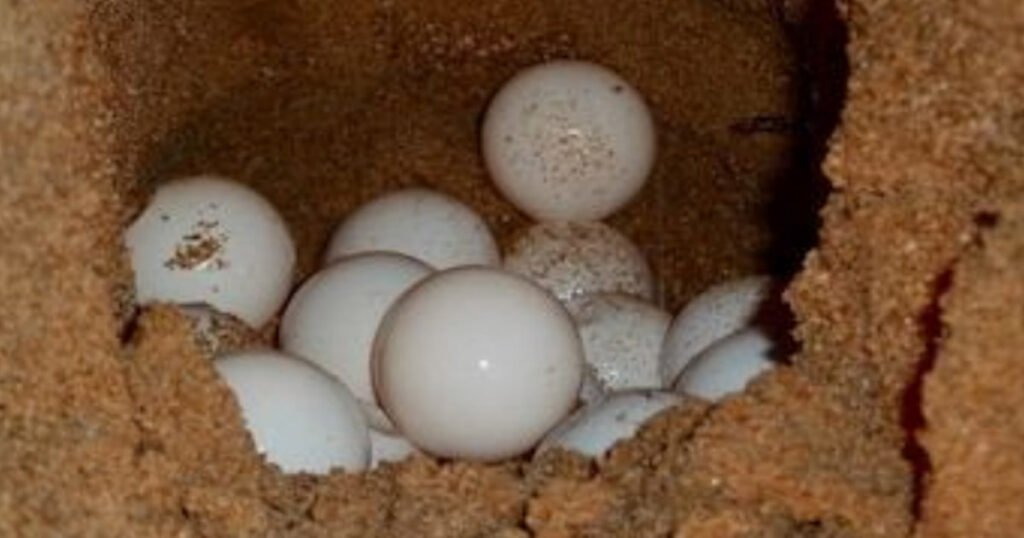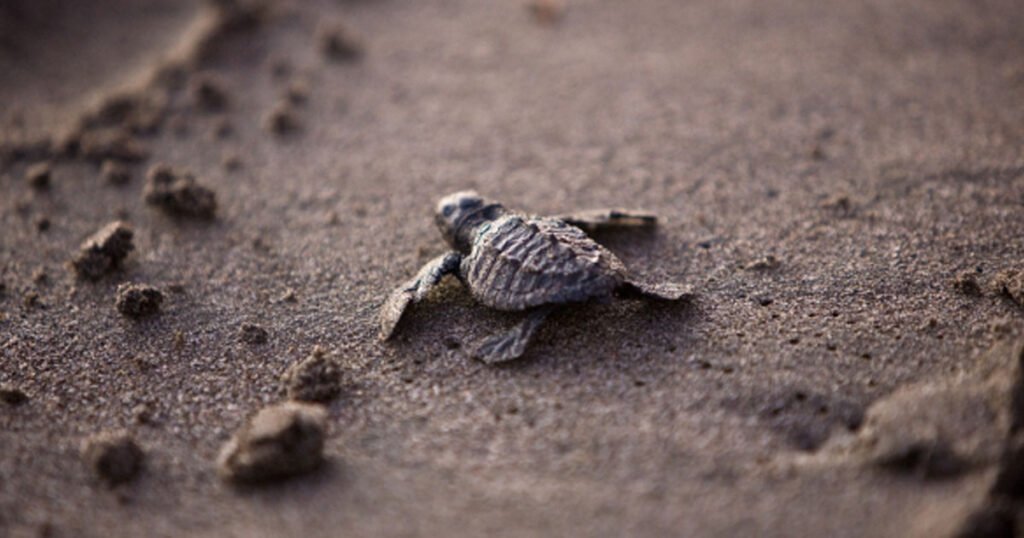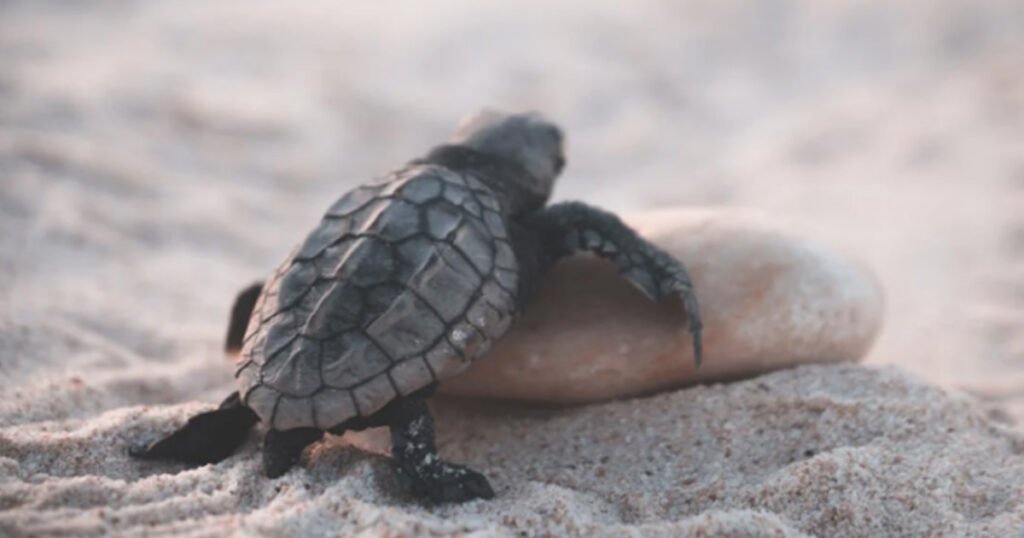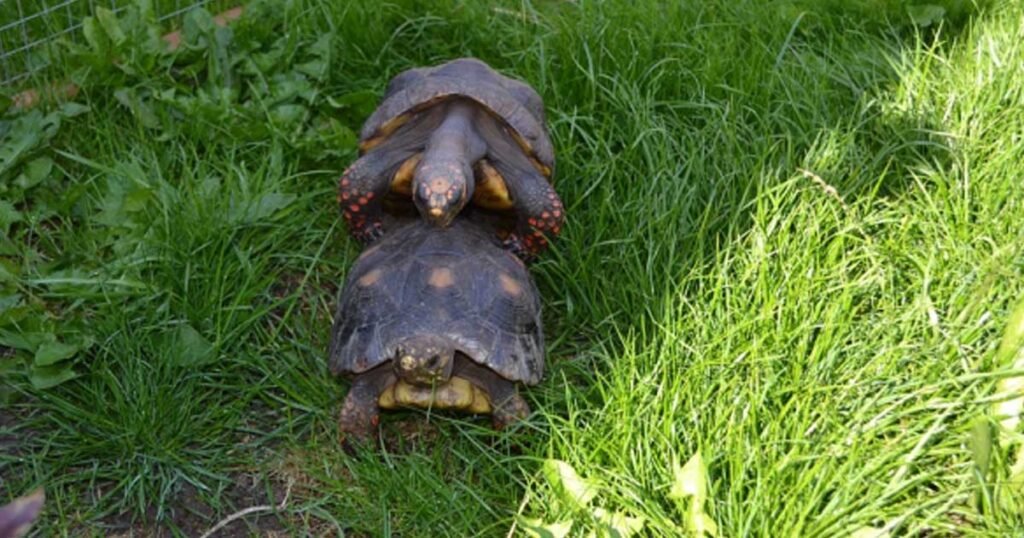Turtles are intriguing creatures, and many people love keeping them as pets. One fascinating aspect of their life cycle is their egg-laying behavior, which is a critical part of their reproductive process. But have you ever wondered, “How many eggs can a turtle lay?” The number of eggs in a turtle nest called a clutch, depends on the species.
Turtles have different nesting habits, with some species traveling long distances to find the perfect nesting site. Once they’ve chosen a suitable spot, usually a sandy beach or soft soil, female turtles dig a hole with their flippers to deposit their eggs.
This process, known as nesting, is a delicate and crucial stage in a turtle’s life cycle. The variety in egg-laying patterns adds to the wonder of these remarkable reptiles and highlights the unique adaptations they’ve developed. Today we will talk about “How many eggs can a turtle lay?” and more details on their nesting behavior. So, let’s get started.
Table of Contents
How Many Eggs Can a Turtle Lay?

The truth is there is no fixed answer to this question “How Many Eggs Can a Turtle Lay?”. It depends on the turtle species and each turtle’s fertility. While most turtles lay eggs once a year, some may lay eggs every other year. Also, a few species might even lay multiple times in a single nesting season.
Terrapin turtles: Terrapin turtles typically lay 8 to 15 pinkish-white eggs per clutch. Interestingly, females may lay several clutches during one breeding season. After being laid, the eggs take approximately 60 to 100 days to hatch, depending on various factors like temperature and humidity.
Freshwater turtles: Freshwater turtles live in small areas and like peaceful waters such as ponds and rivers. Painted turtles, red-eared sliders, and snapping turtles are common examples. The number of eggs they lay depends on the species, ranging from five to 30 per nest.
Sea turtles: Sea turtles are heavy nesters, laying between six and ten clutches of eggs during the nesting season.
Leatherback turtles: Leatherback turtles, the largest sea turtles, typically lay around 110 eggs per clutch.
Hawksbill turtles: Hawksbill turtles produce the largest clutches with up to 140-160 eggs.
Green turtles: Some species, like the green turtle, lay up to 12 nests in a single season.
Common Snapping Turtle: Despite its moderate size (20-35 cm), the Common Snapping Turtle lays 20-30 eggs per clutch.
Olive Ridley Turtle: The Olive Ridley turtle lays around 105-110 eggs per clutch, making it one of the most fertile egg-layers among sea turtles.
Aldabran Tortoise: The Aldabran Tortoise lays only 12-14 eggs per clutch, which is relatively fewer than other turtles.
Suwanee Cooter: Although small (15-28 cm) in size, the Suwanee cooter lays 15-20 eggs per clutch, showing its reproductive abilities.
Turtle Migration for Nesting Need

Oceanic migrations: Leatherback and other sea turtles travel long distances spanning hundreds of kilometers. They swim vast oceans to return to the beaches where they hatched.
Riverine Migrations: Species like the South American Arrau and the Asian river turtle migrate along rivers. They travel tens of kilometers, searching for suitable nesting sites on large sandbars.
Leaving the Water: All female aquatic turtles must leave their watery homes to find nesting sites. Some settle on nearby riverbanks, while others travel hundreds of meters to reach appropriate nesting conditions.
Nesting exposes female turtles to increased predation risks. The journey, whether on land or in water, is fraught with dangers from predators lurking along the way.
Despite the challenges, these migration patterns are vital for turtle species’ continuation. Returning to their birthplace beaches ensures future generations’ survival.
Nesting Behavior of Turtles
Turtles naturally dig nests for eggs. Most species dig a chamber using their hind limbs. The female turtle carefully chooses the nesting site before starting to dig.
Digging Process
When the female turtle begins digging, she uses her hind limbs alternately. One limb supports her body while the other digs into the soil. With a twisting motion, the female turtle scoops the soil out of the nest.
The turtle digs until the hole is about the length of her hind limbs. Once the nest is deep enough, she lays her eggs inside. After laying all the eggs, she covers the nest by dragging the soil back with her hind limbs. Once the female turtle has filled the nest, she departs from the area. It’s the end of her nest-building duties once the female turtle is done.
Unique nesting habits: Some turtle species, like the stinkpot or common musk turtle, use both their fore- and hind feet to dig shallow nests. However, most turtles rely solely on their hind limbs for digging.
Turtles Egg Development Process
Turtle eggs develop at different rates depending on the temperature. Warmer temperatures speed up development, while cooler temperatures slow it down. This means that eggs hatch at different times. In most cases, it’s between 45 and 75 days.
Temperature and Gender Determination
For many turtle species, the temperature during incubation determines the gender of the hatchlings. Within a specific temperature range, both males and females are produced. If the temperature is high, only females hatch; if it’s lower, only males. This critical temperature period occurs during the second trimester of incubation.
Impact of Climate Change
Climate change affects turtle populations by altering hatchling sex ratios. Rising temperatures, especially in regions like Australia’s Great Barrier Reef, have led to sex imbalance. For example, according to a study female green sea turtle hatchlings have increased due to warmer air temperatures.
Turtles Egg Hatching Process

Hatching is a crucial stage in a turtle’s life. It involves two main steps: exiting the egg and getting out of the nest. Hatchlings have a special bump on their nose, similar to an egg tooth in birds, which helps them break through the eggshell. After crawling out from the shell, they typically dig their way to the surface.
Vulnerability to hatchlings
Eggs and hatchlings are incredibly vulnerable to predators. Once they hatch, they face numerous threats from predators in their habitat. Many hatchlings become prey for various animals, making it a challenging time for their survival.
Collective Effort for Sea Turtles
Sea turtle hatching is a collective effort. Due to the energy and time required to dig out of the nest, hatchlings often work together to reach the surface. This cooperative behavior increases their chances of survival.
Adaptations for Survival
After hatching, aquatic species immediately head for the water, while terrestrial species seek refuge in leaf litter or vegetation. These behaviors help them avoid predators and increase their chances of adulthood.
Importance of hatchling survival
Hatchling survival is critical for maintaining turtle populations. As they are the future of their species, their safety and protection are essential. Conservation efforts focus on safeguarding nesting sites and reducing threats to hatchlings.
Egg development and hatching are the foundation for turtle survival. Temperature plays a significant role in determining hatchling sex, highlighting climate change’s impact on turtle populations. Conservation efforts are essential for protecting nesting sites and ensuring hatchling survival.
Nesting Habits of Different Turtle Species

As we told you, different species of turtles follow different behaviors, and their nesting habit is no different. Let’s take a look at some of the turtle species’ nesting habits.
Sea Turtles’ Nesting Behavior
Sea turtles lay between six and ten clutches of eggs during the nesting season as we mentioned earlier. Some species, like the green turtle, lay up to 12 nests in a season. The size of a turtle clutch varies depending on the species and turtle’s size.
River Terrapins’ Nesting Behavior
River-dwelling turtles, such as river terrapins, seek out large sandbars with suitable nesting conditions along rivers. They mate in the water during specific seasons and lay their eggs in the sand from late January to mid-March. Each season, females typically lay about 25-35 eggs, although some clutches contain up to 42 or 43 eggs.
Tortoise Nesting Rituals
Unlike sea and river turtles, tortoises pick their nesting spots carefully. They look for locations with ample sunlight and well-drained soil. After mating, a female tortoise may produce up to 30 eggs, which are not laid all at once. Instead, the eggs are separated into clutches of two to twelve, allowing each clutch to develop to a full size one at a time.
FAQ
How many eggs can a snapping turtle lay?
Snapping turtles belong to the freshwater turtle category. A common snapping turtle can lay a lot of eggs, usually 20 to 30 in each clutch. This ensures species survival despite challenges in the wild.
How many eggs can a box turtle lay?
Female box turtles lay about 3 to 8 eggs in one nest. Some turtles may lay eggs in several nests. Between mid-May and late June, female turtles travel within their territory. They seek a spot to dig a nest and lay eggs, covering distances from a few feet to over a mile.
How many eggs can a green sea turtle lay?
Green sea turtles lay many eggs at a time. Each nest has about 110 eggs. They lay eggs many times in a season. This species’ maximum egg-laying time was recorded as 12 times. They go back to lay eggs every two weeks for a few months.
Read More: Does Turtles Have Backbones: A Comprehensive Guide
Final Thought
Turtles have an amazing diversity of reproductive habits, so understanding how many eggs can a turtle lay gives us important insight into them. From sea turtles’ impressive egg-laying capabilities to freshwater species’ careful nesting habits, turtles continue to captivate us with their unique reproductive strategies. Turtles lay eggs differently, which shows us how they adapt to their environment to keep their species alive.
